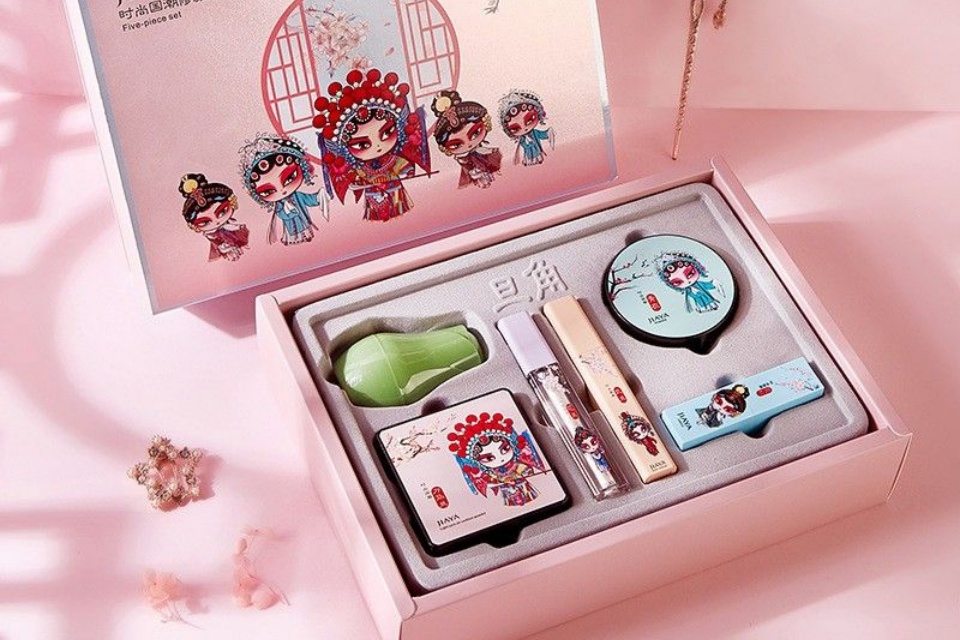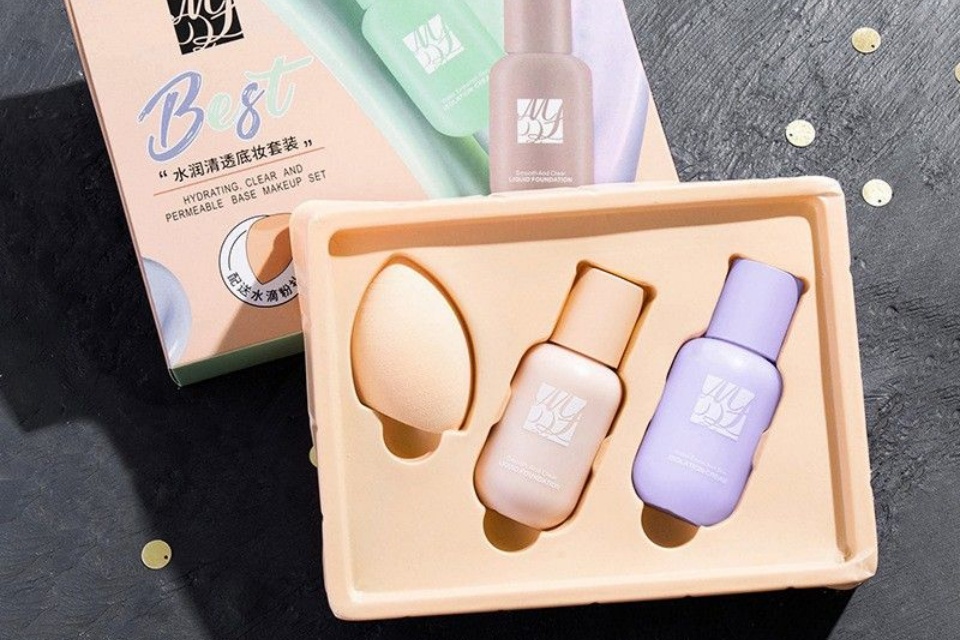Sustainable Cosmetic Packaging Solutions
Sustainable Cosmetic Packaging Solutions
Summary
Sustainable cosmetic packaging solutions refer to eco-friendly packaging innovations and practices designed to minimize the environmental impact of cosmetic products. With the cosmetics industry facing increasing scrutiny over its contribution to plastic waste and environmental degradation, sustainable packaging has emerged as a critical focus area for both consumers and manufacturers. The notable shift towards sustainability began in the 1970s, driven by growing public awareness of health and environmental issues, and has gained momentum in recent years as consumers—particularly Millennials and Gen Z—demand more responsible and transparent practices from brands.
The significance of sustainable cosmetic packaging lies not only in its potential to reduce waste but also in its ability to enhance brand reputation and consumer loyalty. Research shows that 78% of U.S. consumers prioritize sustainable living, and approximately 30% are more inclined to buy products with eco-friendly certifications. Companies are increasingly adopting various sustainable materials, including recyclable, refillable, and biodegradable options, as they seek to align their operations with consumer expectations and regulatory pressures. However, the transition to sustainable packaging presents challenges such as higher initial costs, logistical complexities, and competing business priorities.
Innovations in sustainable packaging are transforming the beauty industry, with advancements in materials and design that cater to environmental considerations while maintaining functionality and aesthetic appeal. Emerging technologies, like AI-assisted recycling and smart packaging solutions, are also paving the way for more efficient recycling practices and enhanced consumer engagement. As regulatory frameworks evolve globally, manufacturers are compelled to adapt to new sustainability standards, ensuring compliance while enhancing their market position through responsible practices.
Despite the progress made, the journey toward widespread adoption of sustainable packaging is ongoing, marked by both opportunities and obstacles. The industry's commitment to sustainability not only addresses consumer demand but also contributes to broader environmental goals, establishing a pathway for the future of cosmetic packaging that balances innovation with ecological stewardship.
History
Early Developments in Sustainable Cosmetics
The movement towards sustainable cosmetics began gaining momentum in the 1970s, driven by growing public concern regarding health, environmental impacts, and animal testing associated with cosmetic products. This period marked a critical awakening in consumer awareness, prompting cosmetics companies to rethink their approaches to formulations and packaging.
The Rise of Eco-Friendly Practices
As awareness of ecological issues expanded, particularly among Millennials and Gen Z, consumers began prioritizing sustainable practices in their purchasing decisions. Research indicates that as of recent years, 78% of U.S. consumers consider living a sustainable lifestyle important, and a significant 30% are more inclined to purchase products with eco-friendly credentials. This consumer shift pressured brands to innovate and adopt greener processes, including the use of minimalist formulas and waterless cosmetics, as well as eco-friendly packaging solutions.
Challenges and Innovations in Packaging
The cosmetics industry has faced notable challenges, particularly regarding the environmental impact of packaging. Traditional plastic packaging has been criticized for its contribution to waste and difficulty in recycling. To address these issues, many companies have begun exploring sustainable packaging alternatives, emphasizing materials that are recyclable, biodegradable, or reusable. Innovations such as AI-assisted recycling technologies and circular economy principles have emerged as potential solutions to enhance recycling efficiency and reduce environmental footprints in cosmetic packaging.
Current Trends and Future Directions
In response to evolving consumer preferences and regulatory pressures, the industry is currently navigating a paradigm shift towards more sustainable practices. The integration of natural ingredients and cutting-edge preservation techniques is becoming commonplace, with an emphasis on transparency and education to help consumers understand the true benefits of sustainable products. As the journey toward sustainability continues, cosmetics companies are increasingly recognizing the imperative to innovate responsibly to remain competitive in a market that prioritizes environmental stewardship.
Types of Sustainable Packaging Materials
Sustainable packaging materials are essential for reducing the environmental impact of cosmetic products. These materials can be categorized into several innovative types, each designed to minimize waste and promote eco-friendliness.
Recyclable Materials
The use of recyclable materials, including paperboard and certain plastics, plays a crucial role in sustainable packaging efforts. Recycled content not only reduces the need for virgin materials but also contributes to a circular economy by lowering carbon footprints. Brands increasingly utilize materials like recycled polyethylene terephthalate (PET) and polypropylene (PP) in their packaging designs, aligning with consumer demand for sustainable practices.
Refillable Packaging
Refillable packaging allows consumers to reuse containers by purchasing product refills instead of entirely new packages. This approach significantly reduces the demand for new materials and promotes a culture of sustainability among consumers. Refillable systems not only contribute to waste reduction but can also provide cost savings for both brands and consumers.
Compostable and Biodegradable Materials
Compostable materials are typically made from organic substances, such as cornstarch or bamboo by-products, which decompose without leaving harmful residues. Biodegradable packaging alternatives, like plant-based plastics and starch blends, are gaining popularity as they break down naturally over time, minimizing landfill waste. Materials such as cellulose-based polymers also serve as eco-friendly alternatives to conventional plastics, offering versatile applications in cosmetic packaging.
Minimalist Design
Minimalist packaging design reduces excess materials, leading to less waste while also presenting a modern and elegant aesthetic. This approach appeals to environmentally conscious consumers and demonstrates a brand's commitment to sustainability. By focusing on clean lines and essential branding elements, minimalist packaging effectively balances style and functionality.
Alternative and Innovative Materials
Beyond traditional options, companies are exploring unconventional materials such as mushroom packaging and edible plant-based packing peanuts. These innovative materials showcase how packaging choices can positively impact the environment while meeting aesthetic and functional requirements. Furthermore, utilizing natural materials like recycled, virgin, or dye-free paper helps reduce the overall environmental impact of packaging.
Benefits of Sustainable Cosmetic Packaging
Sustainable cosmetic packaging offers a multitude of benefits that align with environmental goals and consumer expectations. By adopting eco-friendly packaging solutions, brands can significantly reduce their ecological footprint while enhancing their brand image and customer loyalty.
Environmental Conservation
One of the primary benefits of sustainable packaging is its role in conserving natural resources such as energy and water. By minimizing the negative impacts associated with traditional packaging, brands can help protect land, air, and water resources from degradation. Moreover, sustainable packaging often incorporates recycled and upcycled materials, contributing to a circular economy that reduces reliance on virgin resources and extends the lifespan of materials.
Enhanced Brand Image
Companies that utilize environmentally-friendly packaging tend to see a marked improvement in their brand image. As consumers become more environmentally conscious, brands that demonstrate a commitment to sustainability can foster stronger relationships with their customers. A UK-based study found that 58% of consumers who purchased sustainable cosmetics cited environmental benefits as a key factor in their purchasing decisions, highlighting the importance of aligning packaging choices with consumer values.
Competitive Advantage
In the competitive beauty industry, sustainable packaging can provide a crucial edge. Brands that adopt green packaging practices not only reduce waste but also cultivate authenticity and social responsibility in the eyes of consumers. This is particularly relevant in the skincare category, where sustainable packaging appeals directly to consumers' desires for clean, ethical, and health-conscious products. By embracing eco-friendly packaging solutions, luxury companies can differentiate themselves and attract a more conscious consumer base.
Improved Consumer Experience
Sustainable packaging can also enhance the overall consumer experience. Innovative dispensing systems, such as airless pumps and droppers, minimize product waste by ensuring precise application, which not only reduces unnecessary usage but also improves user satisfaction. Additionally, well-designed sustainable packaging can offer a sleek and clean aesthetic that appeals to consumers, distinguishing the product from competitors with bulkier, less thoughtful packaging.
Regulatory Compliance and Future Preparedness
As regulations increasingly evaluate the environmental impact of packaging, companies that prioritize sustainable practices will be better positioned to comply with future standards. The adoption of sustainable packaging solutions can lead to reduced carbon footprints and lower scope 3 emissions, which is essential as companies target growth in developing markets that contribute significantly to unmanaged waste.
Challenges in Implementation
Implementing sustainable cosmetic packaging solutions presents a variety of challenges that companies must navigate to achieve their sustainability goals. These challenges can stem from financial, logistical, and operational factors, which vary significantly across different regions and market contexts.
Financial Constraints
One of the primary obstacles to adopting sustainable packaging is the often higher cost associated with eco-friendly materials compared to traditional options, such as plastic. For many companies, especially startups and small beauty brands, these costs can pose a significant barrier to entry, making it difficult to maintain competitive pricing while also prioritizing sustainability. Despite the long-term cost benefits of sustainable packaging—such as reduced expenses related to government fees on non-recyclable materials and enhanced brand loyalty—initial investments can be daunting.
Logistical Challenges
The infrastructure necessary to support refillable or reusable packaging models is frequently underdeveloped, which complicates broader adoption. Companies face financial and logistical hurdles in establishing systems for collection, cleaning, and redistribution of packaging materials. Moreover, ensuring that sustainable packaging complies with diverse regulations across regions adds layers of complexity to the implementation process, as companies must adapt to varying legislative requirements regarding safety and sustainability.
Competing Priorities
Businesses often grapple with balancing sustainability efforts against other operational priorities, such as performance, cost-efficiency, and time-to-market considerations. For many organizations, competing priorities can lead to a lack of focus on sustainable practices, as immediate business needs overshadow longer-term environmental goals. The necessity for a cross-functional approach to align teams on sustainability initiatives is critical, yet it can be challenging to coordinate across departments with differing objectives and metrics of success.
Data Limitations
A lack of robust data on consumer preferences and material performance can hinder the ability of companies to make informed decisions regarding sustainable packaging. Many businesses lack comprehensive insights into the environmental impact of their packaging choices, making it difficult to identify optimal strategies for reducing waste and improving sustainability outcomes. The variability in understanding and action across the fast-moving consumer goods sector further complicates the establishment of best practices and common standards for sustainable packaging solutions.
Innovations in Sustainable Packaging
Overview of Sustainable Packaging Trends
The beauty industry is witnessing significant innovations in sustainable packaging, driven by consumer demand for eco-friendly alternatives and a commitment to reducing environmental impact. Many leading brands are shifting away from traditional single-use plastics towards more sustainable materials such as glass, biodegradable options, and refillable systems. This transition is crucial as most packaging today is designed for single use, contributing to the growing waste problem that affects landfills and oceans.
Types of Sustainable Packaging Innovations
Recyclable and Biodegradable Materials
A prominent trend in sustainable packaging is the use of recyclable or biodegradable materials. This approach significantly decreases the volume of waste entering landfills and conserves natural resources by reducing raw material consumption. Companies are increasingly adopting these materials to meet the rising consumer expectations for environmental responsibility.
Refillable and Reduced Packaging
Refillable packaging is another innovative solution that minimizes waste by allowing consumers to reuse containers. Additionally, brands are focusing on reducing packaging overall, utilizing minimalist designs that maintain aesthetic appeal while cutting down on material usage. This shift not only meets sustainability goals but also resonates with eco-conscious consumers.
Technological Innovations in Packaging
Smart Packaging Solutions
The integration of technology into packaging design is paving the way for smart packaging solutions that enhance both sustainability and user experience. Innovations such as QR codes and augmented reality are being used to educate consumers on recycling practices, promoting responsible behavior while increasing engagement with the brand. Data-driven insights collected through smart packaging can help companies refine their sustainability strategies based on real-time consumer feedback.
Airless Pump Bottles and Advanced Designs
Airless pump bottles are another technological advancement that reduces waste and extends product life. These innovative designs minimize the amount of product wasted and enhance functionality, giving brands a competitive edge in the market. The focus on creative and functional packaging design remains a critical aspect of attracting consumers in a crowded marketplace.
Future Directions
Looking ahead, continued advancements in technology are expected to play a pivotal role in overcoming the barriers to sustainable packaging in the beauty sector. Companies are investing heavily in research and development to create innovative solutions that align with changing consumer trends and environmental goals. The future of sustainable cosmetic packaging promises to be diverse and exciting, marked by ongoing evolution and a deeper commitment to eco-friendliness.
Regulations and Standards
Overview of Regulatory Landscape
The regulatory landscape surrounding cosmetic packaging is increasingly complex, with different regions implementing varying standards and regulations to address environmental concerns. In the United States, the Food and Drug Administration (FDA) governs cosmetics under existing laws, but there is a growing movement towards modernizing regulations to enhance safety and sustainability. In contrast, the European Union has introduced stringent regulations, such as the EC 1223/2009 Cosmetic Regulation, which emphasizes the need for compliance and adaptability among manufacturers.
Impact of Environmental Regulations
Governments globally are adopting regulations aimed at reducing the environmental impact of packaging, particularly the use of single-use plastics. Many countries have instituted bans on specific plastic packaging types, including microbeads found in cosmetics. Extended Producer Responsibility (EPR) policies are becoming more common, mandating that producers are accountable for the end-of-life impact of their packaging, which includes financing recycling and waste management efforts. This shift is pushing cosmetic manufacturers to innovate and explore sustainable packaging alternatives, such as recyclable and biodegradable materials.
Recent Developments in Legislation
In recent years, several key legislative initiatives have been introduced to promote sustainability in the cosmetic sector. The European Green Deal of 2020 and the Corporate Sustainability Reporting Directive (CSRD) established in 2023 represent significant strides in holding businesses accountable for their environmental impact. Additionally, the Cosmetics Regulation Act (MoCRA), passed in late 2022, marks a pivotal update to U.S. cosmetics regulations since 1938, setting new standards for safety and sustainability.
Compliance and Certification Standards
To navigate this evolving landscape, brands are increasingly seeking certifications that demonstrate their commitment to sustainable practices. Certification schemes, such as COSMOS, provide assurance to consumers about the organic and sustainable nature of products. These certifications often involve ongoing assessments, reinforcing a brand's dedication to sustainable practices and enhancing consumer trust. As consumers demand greater transparency, these certifications serve as critical tools for brands to showcase their compliance with environmental standards and ethical production practices.
Challenges in Compliance
Despite the push for sustainability, companies often face significant challenges in adapting to new regulations. The need for clear labeling to inform consumers about the recyclability and environmental impact of packaging is becoming more pronounced. Furthermore, many brands struggle to convince consumers about sustainable options, highlighting a gap between production efforts and consumer awareness. As regulations evolve, companies must not only implement sustainable practices but also effectively communicate their efforts to consumers to foster a shared commitment to environmental responsibility.



